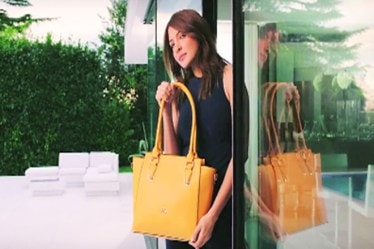Advertisements for women’s handbags have taken on a stylish and zippy tone, no doubt. However, all of them seem to be following a set formula — a Bollywood celebrity posing with a handbag in an exotic foreign destination. The category which comprised mostly of unorganised players until recently, now has several brands vying for women’s attention, including private labels from e-commerce players. According to Euromonitor, the handbag category, in terms of value sales, has grown from Rs 3,850 crore in 2016 to Rs 5,140 crore in 2018. With little differentiation in their advertising strategy, it appears to be a case of style over substance.
She wants the ‘looks’
Sandeep Goenka, COO, BagZone Lifestyles, believes consumers are essentially looking for freshness. For its brand Lavie, the company rolled out a campaign recently with its new endorser Anushka Sharma. Previously, actors Kareena Kapoor and Kangana Ranaut were its brand ambassadors. “Our brand proposition is Fickle is fun, which translates into being spoilt for choice — with colours, styles and design,” Goenka says. “We prefer to change our brand ambassador, in keeping with the trend in Bollywood.”A big chunk of sales for the category is driven by tier 1 cities. For Lavie, this portion is 45-50%, and 65% of its overall sales comes from the offline channel. Its marketing spends are in the range of 15-18% of sales.
Lino Perros, another player in this space with actor Katrina Kaif as its endorser, sees majority sales (55-60%) coming through the online channel, where a wider variety is on display for consumers. Natasha Dua, director, Lino Perros, says that while utility is a desired attribute, what customers really want are ‘good looks’. “Women these days want a different bag to go with every outfit and every occasion.” Lino Perros will roll out a 360-degree campaign with Kaif by the year end, and has 8-10% of its turnover marked out for marketing and advertising spends until November 2019.
Variety woos
Does showcasing the functional aspect of a handbag play any role at all? Anirudh Pandharkar, head of marketing, VIP Industries, that owns the brand Caprese, says it’s the variety that matters most to customers. “When it comes to actual point of purchase, the first thing they notice is the design, silhouette and then the functional aspects like number of compartments, space, etc.”
In July this year, Baggit chose a different communication route to go beyond aesthetically pleasing its audience. Featuring its brand endorser Shraddha Kapoor, Baggit’s campaign #PutItOnTheTable took on the practice of ‘mansplaining’ that is prevalent in offices. Atul Garg, CMO, Baggit, says, “Post the campaign, we saw an increase in walk-ins and CRM data capturing, along with business and brand health improvement.”
But this is just an aberration from the norm. “The category looks to be in a confused state with the players not making enough efforts into crafting a differentiated positioning,” says Harish Bijoor, founder, Harish Bijoor Consults. After all, how long can brands bank on ‘variety’? “Every brand has its own signature based on which consumers get attracted to it. The celebrities too bring their own personality and image to the brand,” maintains Dua.
